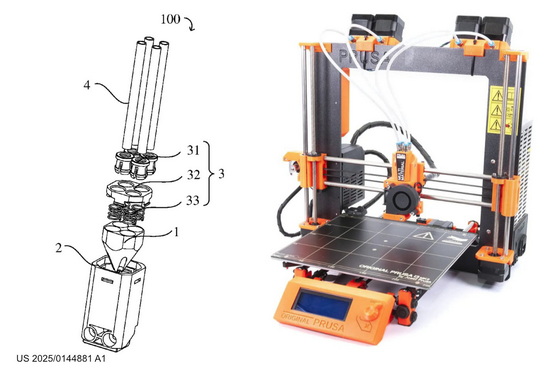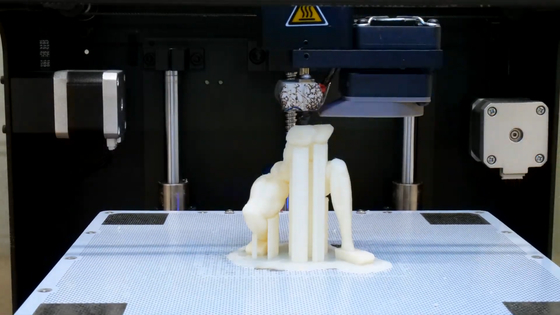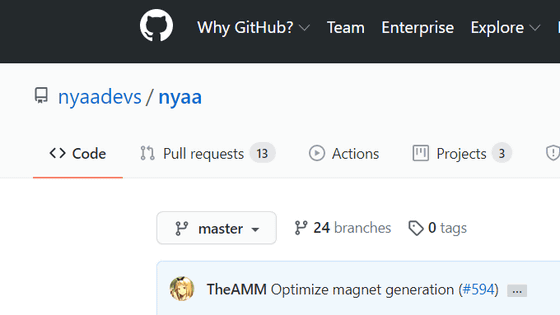Pointing out that 'open source design of 3D printers' has been patented by Chinese companies without permission, putting the entire industry in crisis

Josef Prusza, an engineer who has been designing and building 3D printers since 2009, has said that the future of the industry is at risk after his open-source hardware design was patented without his permission.
Open hardware desktop 3D printing is dead - you just don't know it yet | Josef Prusa / 3D printing
According to Prusha, the design was an exact copy of the multicolor printing unit (MMU) design he released as open source in 2016. This design has been approved as a utility model in China and Germany, and a patent application has also been filed in the United States.

Prusha points out that 3D printing-related patent applications by Chinese companies have exploded since around 2020. According to data presented by Prusha, just four prominent companies in the industry filed a total of 40 patent applications in 2019, which jumped to 650 in 2022.

The background to this is that the Chinese government has designated 3D printing a 'strategic industry' and introduced a preferential treatment called 'super tax reduction.' Under this system, 200% of research and development expenses are eligible for tax deductions, and patent applications, which do not even need to be approved, are used as 'proof of innovation' to qualify for this benefit. As a result, a situation has arisen that could be described as 'patent spam,' in which existing open source technologies and ideas with only minor improvements are filed one after another as patents without sufficient validation.
Some argue that the patent should be invalid because the technology is already publicly available, but Prusha denies this, saying, 'The reality is not that simple.'
The biggest problem is the sheer cost of challenging a patent. While filing a patent in China costs just $125, invalidating that patent in the US or EU can cost around $12,000 in a simple case, and several times that amount in a more complex one. Once approved, it can cost more than $75,000 just to launch an opposition.
Furthermore, even if a company has valid prior art, as long as a patent exists, it could be prevented from importing or selling its products on the grounds of 'infringement.' Overcoming this would require millions of dollars in costs and lengthy legal battles, bringing business to a complete halt during that time. Faced with this risk of litigation, it's no wonder manufacturers are hesitant to produce and sell open source hardware.

In response to this crisis, Prusha has set up a team to monitor patent applications and is exploring new licenses to protect the community, but he strongly warns that this problem is not limited to the 3D printing industry. 'Pay attention to patent applications in your field of expertise. It is much easier to take action now than to deal with it later,' Prusha said.
Various opinions have been expressed on the social news site HackerNews in response to Prusha's complaint.
User simpaticoder pointed out, 'The real problem here is that intellectual property ownership has become capital-intensive, even though it shouldn't be. This leaves open source and community-driven intellectual property significantly underprotected, and those with capital become unilateral predators,' raising the issue of costs to the judicial system as a whole. AlexandrB also argued that the imbalance in the international IP system is the problem, saying, 'It's ridiculous to treat patents seriously in China when it's okay to happily ignore Western patents. This asymmetry gives Chinese companies a clear advantage.'
Meanwhile, the debate is also extending to changes in the user base of 3D printers. Ccecil , an early participant in the RepRap project , reflected on the community's history, pointing out that 'the true value of the RepRap project was the process of building and improving a printer itself, but that culture stagnated due to the trend of 'it's better to buy a ready-made product.'' Leif Carrotson , from the perspective of many users, said, 'Many users, who are artists and engineers, aren't interested in how the printer works; they simply want a tool that works, so it makes sense to choose a reliable commercial product.' Aurornis , who has experience with both homebrew and commercial printers, said from a practical perspective, 'For those who want to start printing right away, commercial products are much easier, allowing them to focus on their original design and printing rather than printer maintenance.'
Some users, however, point out that Prusha's printer is expensive, costing $1,000 (approximately ¥150,000), and believe that the allegations of China's illegal patents are merely an excuse for market defeat. bdcravens commented, 'There used to be a strong stereotype that non-Chinese products were of higher quality, and people were happy to buy them at a higher price. However, in industries such as 3D printing, that barrier is crumbling. Of course, government subsidies can lead to unfair price advantages, but the Bambu Lab A1 , which is cheaper than Prusha's printer, still maintains a performance advantage.'
Related Posts:
in Hardware, Posted by log1i_yk







